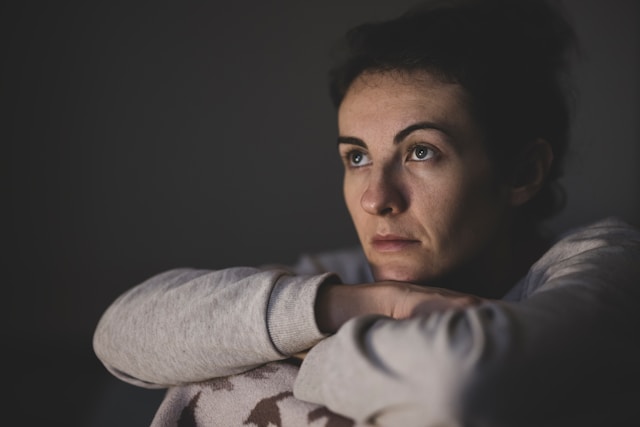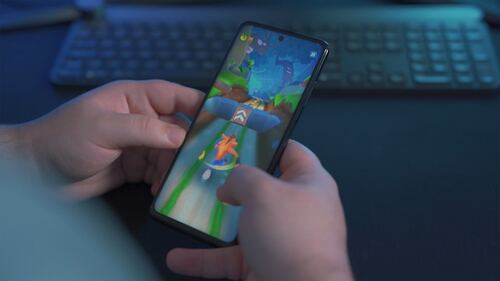With its memorable sequences and eerie atmosphere, the 1982 supernatural horror thriller Poltergeist never fails to frighten viewers. A recurring myth about the production that makes spectators shudder is the one about actual human skeletons being used as props. The 1982 Movie Poltergeist Used Real Skeletons As – Tymoff fans have been enthralled with this rumor for decades, especially when it’s coupled with murmurs of curses and on-set deaths. But does this eerie story have any merit?
Discovering the Rumor’s Roots
Not long after the movie’s premiere, the rumor began to spread that there were actual skeletons in Poltergeist. There are theories that the production team chose to use real human remains rather than artificial ones, especially for the iconic scene in the swimming pool where young Carol Anne Freeling floats beneath the plastic cover. This alleged choice to have a more realistic effect stoked anxiety and conjecture.
Analyzing the Data: Distinguishing Real from Fiction
Although the story has endured, there isn’t much hard proof to back it up. Below is a summary of the important things to think about: The 1982 Movie Poltergeist Used Real Skeletons As – Tymoff
Absence of Reputable Sources: The usage of genuine bones is not mentioned in any official paperwork from the prop department, special effects team, or production.
Industry laws: The use of human remains as props in motion picture productions is subject to stringent laws. There are considerable concerns regarding the film circumventing these rules because obtaining and using real skeletons would be a difficult and unethical process.
1982 Special Effects Capabilities: Early 1980s prosthetic and special effects techniques were sufficiently evolved to produce lifelike skeletons for cinema, even though they were not as sophisticated as modern CGI.
Other hypotheses: A few hypotheses suggest using animal skeletons, however doing so would also need permissions and create ethical questions. More likely, a variety of approaches were used by the props department, such as creative special effects techniques and painstakingly constructed fake skeletons.
The Rumor’s Haunting Legacy
The story that there are actual skeletons in Poltergeist has been deeply embedded in the movie’s mythology, even in the lack of conclusive evidence. It makes the experience of watching more unsettling by obfuscating the distinction between unsettling reality and cinematic fantasy.
The rumor has also given rise to conjecture regarding a purported curse afflicting the production. In the years that followed the movie’s premiere, a number of cast members tragically passed away, notably special effects artist Craig Reardon and teenage actress Dominique Dunne (Dana Freeling). Even while these incidents are obviously depressing, it’s more likely that they were just unlucky coincidences rather than anything to do with the movie.
The Persistence of Poltergeist’s Power
Poltergeist is still regarded as a seminal horror movie, praised for its innovative special effects, likable characters, and genuinely spooky atmosphere. Even though the skeleton story is unfounded, it surely adds to the film’s mystique and lasting influence. It acts as a reminder of the pervasive appeal of urban legends in popular culture and the strength of suggestion.
Examining the Special Effects in the Film Beyond the Skeletons
The special effects of Poltergeist were groundbreaking when they were released. The film’s crew, under the direction of the renowned special effects artist Richard Edlund, invented methods that are studied and appreciated to this day.
Stop-motion animation and elaborate miniature sets were used to create the seamless effect of a collapsing structure in the famous scene where the Freeling family home is devoured by the unseen thing.
Using Invisible Wires and Rods: A lot of the film’s supposedly magical motions, such as items flying through the air, were accomplished by deftly manipulating invisible wires and rods just out of sight.
Early Compositing Techniques: Poltergeist demonstrated ground-breaking developments in compositing, which is the art of fusing special effects elements with live-action film. This made it possible to create eerie and realistic visuals, like the ghostly apparitions that haunt the Freelings.
Decades after its release, audiences are still impressed by the film thanks to the hard work and creativity of the special effects crew. Their work on Poltergeist is a monument to the effectiveness of practical effects and their capacity to produce genuinely terrifying and convincing cinematic moments.
Conclusion : The 1982 Movie Poltergeist Used Real Skeletons As – Tymoff
The 1982 Movie Poltergeist Used Real Skeletons As – Tymoff it’s Even though the story of actual skeletons in Poltergeist is merely an urban legend in Hollywood, it certainly contributes to the eerie mystery of the movie. The real impact of Poltergeist is found in its imaginative use of special effects, sympathetic characters, and enduring examination of the horrors that can exist in seemingly everyday situations. The skeletons from Poltergeist serve as a reminder of the movie’s lasting ability to frighten and enthrall viewers, regardless of its veracity.
Ten Unsettling FAQs Regarding Poltergeist Skeletons
Is it accurate to say that Poltergeist used actual skeletons?
This rumor isn’t supported by any hard data. Although it heightens the eerie atmosphere of the movie, it’s probably just a Hollywood urban legend.
What initially sparked the rumor about actual skeletons?
Although the actual source of the myth is unknown, it most likely originated from the uncomfortable nature of the swimming pool scene and a need for more realism.
Isn’t it against the law to use actual skeletons?
Yes, using human remains as props is subject to tight laws. Real skeletons would be difficult and unethical to obtain.
In 1982, weren’t special effects sophisticated enough to produce phony skeletons?
Early in the 1980s, special effects were sufficiently developed, even without CGI, to produce realistic skeletons. It’s possible that Poltergeist employed a variety of methods, such as creative special effects and prosthetic skeletons.
Does the story of a Poltergeist curse have any merit?
A number of the cast members passed away following the movie, however these were probably just sad coincidences rather than signs of a curse.
In Poltergeist, which special effects were employed?
Innovative methods were used in the movie, such as early compositing for ghostly apparitions, invisible wires for flying items, and miniature sets with stop-motion animation.
Why is Poltergeist such a terrifying film?
The uncanny atmosphere, likable people, and effects that conflate the otherworldly with reality are what make Poltergeist so terrifying.
Why is the skeleton rumor so persistent?
The rumor plays on our dread of the unknown and death. It highlights the influence of urban legends and gives the movie another level of spookiness.
Does the movie get scarier because of the rumor of genuine skeletons?
Whether true or not, there is no denying that the rumor heightens the mystery and unnerving aspect of the movie. Viewers are left wondering and challenging where the lines are drawn between unsettling reality and cinematic illusion.
How should we interpret the Poltergeist skeleton rumor?
Poltergeist’s lasting appeal stems from its capacity to both frighten and amuse. Even though the skeleton myth is unfounded, it nevertheless highlights the film’s impact and the timeless appeal of Hollywood mysteries.



